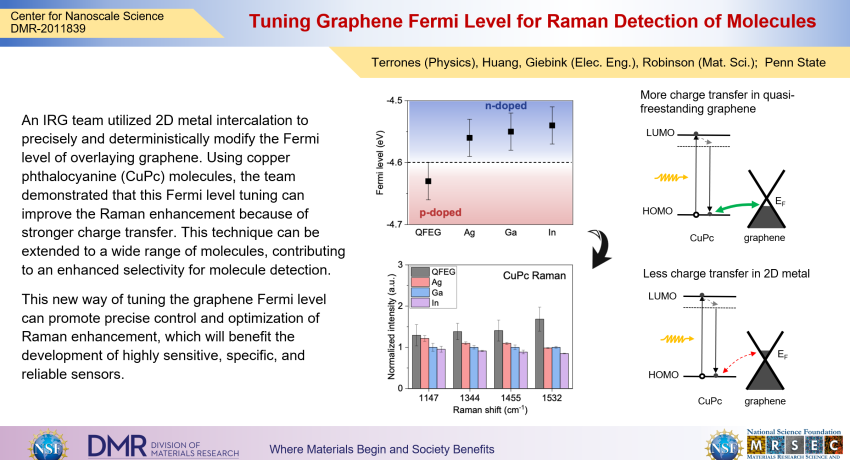What Has Been Achieved: Thin layers of metal atoms (2D metals) are shown to be a novel means of chemical doping to fine tune the Fermi level of graphene and investigate charge transfer in graphene-enhanced Raman scattering.
Importance of the Achievement: This work sheds light on the ability to manipulate energy levels in 2D materials through strategic Fermi level tuning, thus opening avenues for further research in the design and optimization of substrates for a wide range of molecular detection and sensing applications.
How is the achievement related to the IRG, and how does it help it achieve its goals? The IRG’s work on utilizing 2D metals to modulate the Fermi level in graphene focuses on exploiting the unique properties of two-dimensional polar metals to advance the design of optically and electronically active heterostructures. By demonstrating precise Fermi level control and enhanced Raman performance through strategic incorporation of 2D metals, this research supports the IRG's objectives to develop novel, air-stable, atomically thin metal heterostructures for improved quantum devices and biosensing applications.
Where the findings are published: ACS Nano 2024 18 (12), 8876-8884 DOI: 10.1021/acsnano.3c12152


